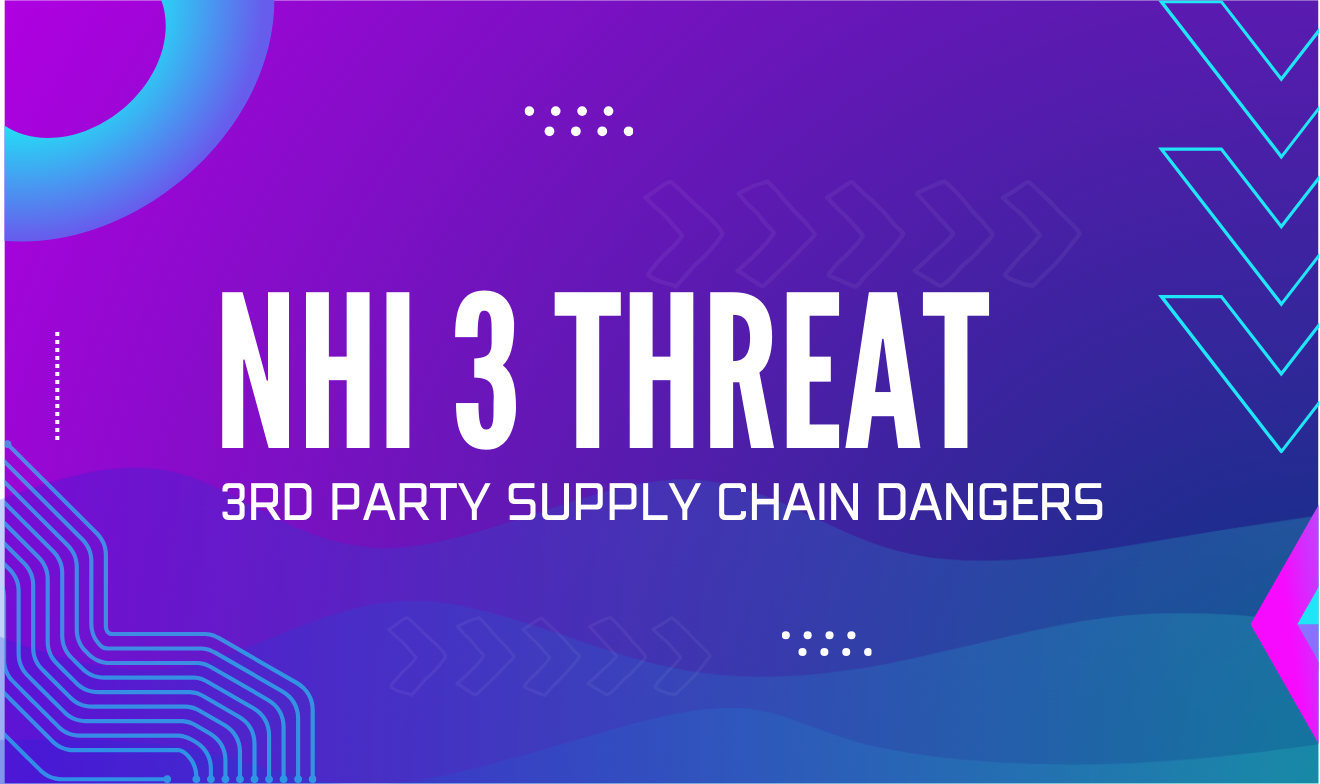OWASP NHI3:2025 - Vulnerable Third-Party NHI
By
Ben Kim
November 17, 2025
5-minute read
By
Ben Kim
November 17, 2025
5-minute read
.png)

In today’s interconnected digital world, enterprises rely heavily on a vast ecosystem of third-party services and integrations to streamline operations and drive innovation. These integrations often involve the exchange of sensitive data and grant access to critical systems through non-human identities (NHIs). While these connections offer immense benefits, they also introduce significant security risks—particularly regarding vulnerable third-party NHIs, recognized as NHI3:2025 in the OWASP Non-Human Identities (NHI) Top 10. Understanding this threat is crucial for strengthening your organization’s security posture.
Third-party NHIs are the digital credentials used by external applications, services, or integrations to access resources within your environment. These can range from integrated development environments (IDEs) and their extensions to various third-party SaaS applications connected to your systems.
NHI3:2025 – Vulnerable 3rd Party NHI occurs when these third-party components or their associated NHIs become compromised. This can happen due to several factors, such as:
• Security vulnerabilities within the third party’s own systems or software
• Malicious updates or backdoors introduced by threat actors targeting the third party
• Misconfigurations or weak security practices on the third party’s end
The compromise of a third-party NHI can have severe consequences for your organization. Because these identities are often deeply integrated into development workflows and operational processes, attackers can exploit them to:
• Steal sensitive credentials – If a third-party IDE extension is compromised, attackers could steal internal NHIs or misuse the permissions granted to them.
• Gain unauthorized access to critical systems and data – Once attackers control a third-party NHI with sufficient permissions, they can pivot into internal resources, potentially accessing customer data, intellectual property, or critical infrastructure.
• Disrupt operations – By manipulating or disabling third-party integrations, attackers can disrupt essential business processes and impact productivity.
• Launch supply chain attacks – Compromised third-party NHIs can serve as an entry point for broader supply chain attacks, allowing attackers to infiltrate multiple organizations reliant on the same vulnerable third-party service.
The interconnected nature of modern systems means that a vulnerability in even a minor third-party component can create a ripple effect, jeopardizing the security of your entire enterprise.
Real-World Examples Highlighting the Risk
While no specific third-party NHI breaches are detailed in available sources, the inclusion of this threat in the OWASP NHI Top 10 underscores its reality. Consider these plausible scenarios:
• A popular code analysis tool used in your CI/CD pipeline is breached. Attackers gain access to API secrets the tool uses to interact with your code repositories, allowing them to inject malicious code.
• A third-party marketing automation platform connected to your customer database has a vulnerability. Attackers exploit this to steal OAuth secrets used for integration, gaining access to sensitive customer information.
• A seemingly innocuous browser extension used by developers is compromised, enabling attackers to harvest API keys and secrets stored in local development environments.
These scenarios illustrate how vulnerabilities in third-party NHIs can bypass direct security controls, leading to potentially devastating breaches.
Protecting your organization from vulnerable third-party NHIs requires a proactive, multi-layered approach:
1. Thoroughly vet third-party vendors – Before integrating any third-party application or service, conduct a comprehensive security assessment. Evaluate their security policies, incident response plans, and history of security incidents.
2. Apply the principle of least privilege – Grant third-party NHIs only the minimum level of access required for their function. Avoid overly broad permissions that could be exploited if compromised.
3. Implement robust monitoring and alerting – Continuously monitor third-party NHI activity for anomalies. Set up alerts for unusual access patterns, privilege escalations, or access attempts from unexpected locations.
4. Regularly review and audit third-party access – Periodically review third-party integrations and their granted permissions. Remove any that are no longer necessary or do not meet security standards.
5. Enforce strong authentication for internal systems – While you can’t control third-party security directly, ensuring strong authentication within your own environment can limit potential damage if a third-party NHI is compromised.
6. Utilize Non-Human Identity Management solutions – Platforms like Cremit provide unified visibility into all NHIs, including those from third parties. Cremit’s Identity Traceability helps map the origin, owners, and access of these identities, enabling better risk assessment and mitigation.
Vulnerable third-party NHIs represent a significant and often overlooked threat in today’s digital landscape. As organizations increasingly rely on external integrations, it is imperative to extend security measures beyond internal perimeters to include third-party partners and their associated NHIs.
By understanding the risks outlined in OWASP NHI Top 10’s NHI3:2025 and implementing proactive security measures, you can significantly reduce exposure to attacks and strengthen your overall security posture. Ignoring this hidden danger leaves your organization vulnerable to sophisticated cyber threats with potentially severe consequences.
.png)
Need answers? We’ve got you covered.
Below are some of the most common questions people ask us. If you can’t find what you’re looking for, feel free to reach out!
We specialize in high-converting website design, UX/UI strategy, and fast-launch solutions for SaaS and startup founders.
Helping SaaS and startup founders succeed with conversion-focused design, UX strategy, and quick deployment.
Designing sleek, user-focused websites that help SaaS and startup teams launch faster and convert better.
We design and launch beautiful, conversion-optimized websites for ambitious SaaS and startup founders.
